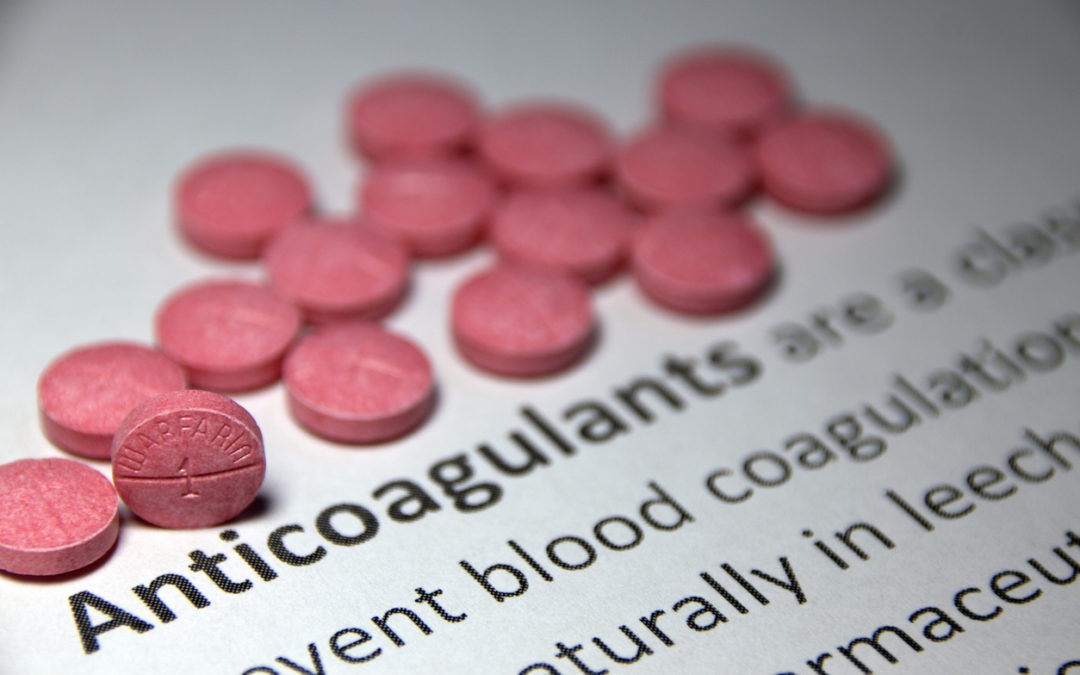Deep vein thrombosis, or DVT, is a common yet potentially serious condition sometimes treated with blood thinners. It’s also connected to varicose veins in some cases. Here’s everything you need to know about varicose veins, blood thinners & DVT.
When Varicose Veins Get Blood Clots
Varicose veins are veins that become twisted and lumpy, swelling in places and restricting the flow of blood. Where blood flow is restricted, blood can pool, which can lead to clotting.
Typically, when varicose veins develop blood clots, they are superficial rather than deep. This condition is called superficial thrombophlebitis. While these clots can cause swelling, pain, tenderness or redness, they rarely travel upward or create the potential of a pulmonary embolism.
In other words, the blood clots that form from normal varicose veins in the leg typically cause pain but don’t pose much of a threat.
Why Blood Clots Are Dangerous
Despite the good news about superficial blood clots, it remains true that blood clots are dangerous, generally speaking. Blood clots that develop elsewhere or in other ways can travel to the lungs or brain, where they can lead to one of several life-threatening health conditions, including an ischemic stroke or pulmonary embolism.
While normal varicose veins rarely pose this risk, severe varicose veins can. And only a vein specialist can determine the severity of your varicose veins.
Severe varicose veins run deeper than the surface of the skin. When clots form deeper in the veins, the condition is termed deep vein thrombosis, or DVT. This condition causes more intense pain and swelling, but more seriously, it carries some risk of the clot breaking loose. If this happens, the clot can travel upward to the lungs, putting you at risk of a pulmonary embolism.
Your risk of blood clots is based on many factors. Weight, smoking status, and autoimmune conditions can all play a role — as can varicose veins, especially severe cases.
DVT (and other blood clots, including those that develop in a heart valve due to A. Fib.) can be managed with blood thinners such as Warfarin. But in cases where DVT is related to varicose veins, the best treatment may be to deal with the veins themselves.
Treatments for Varicose Veins
There are several forms of treatment for varicose veins. Depending on your individual case, one or more treatment types may be appropriate for you.
Varicose Vein Treatment
Varicose vein treatment has come a long way in recent years, with developments like laser treatment or EVLT and microsurgery. We offer both of these methods, along with injection-based sclerotherapy and foam sclerotherapy.
Spider Vein Treatment
Spider veins are the smaller visible veins that sometimes connect to varicose veins and sometimes show up independently. They don’t pose a health risk but can be unsightly. We offer several forms of treatment for spider veins, including these:
- Sclerotherapy
- Foam sclerotherapy
- Electrocautery treatment (nose and face)
Other Body Vein Treatments
You may have some unsightly or troubling veins elsewhere on your body that don’t fall into either category above. Whether you’re dealing with vein issues in your hands, arms, chest, abdomen or groin area, we have treatments appropriate for you.
Finding Vein Treatment in Manhattan, NY
In all these areas, the type of vein treatment that’s right for you depends on your unique case. Our providers in Manhattan, New York, will be happy to provide a customized treatment plan for you. Our team has been providing top-quality care for years and is ready to serve you as well.
Meet Our Vein Physicians in Manhattan, NY, or schedule an appointment now.

